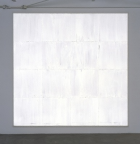Photography fails me
The photograph you see here captures nothing—nothing—of what makes Mary Corse’s paintings worth your time. Photographs of her work are poor, dead things, confounding the truism that a picture is worth a thousand words. Showing you this picture doesn’t tell you that when I saw it in the gallery, it danced with me.
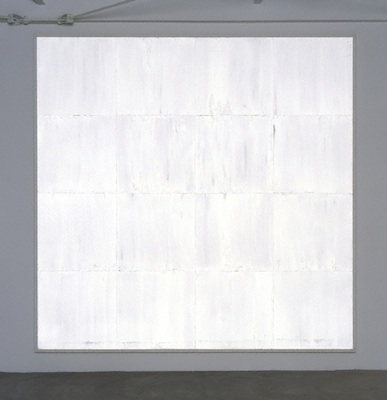
Mary Corse, Untitled (White Light Grid Series, 1969. Glass microspheres in acrylic on canvas, 108 x 108 in., Andrea Nasher Collection
The source of the movement is readily explained—Corse adds reflective glass microspheres, like the material used for highway markings, to her paint. They refract light at angles that change with the observer’s viewpoint, creating the sensation of movement. But understanding the subjective effect of this movement—the feeling of being part of a responsive system, the physical delight of receiving feedback—requires being in the room with the work.
And just as Corse’s work escapes photography (perhaps BECAUSE it escapes photography), it eludes easy ranking within the usual classifications of twentieth-century art. Constructing Corse’s place in history, making a little room for her work, takes some rewriting. Recently she has become part of a story called “The Light and Space Movement in Los Angeles.” What is she doing, there?
History fails me
I first encountered her work at the Getty Center exhibition, Pacific Standard Time: Crosscurrents in L.A. Painting and Sculpture, 1950–1970. I almost missed it. Crosscurrents was the “cornerstone” of the larger Pacific Standard Time initiative, a Getty-funded collaboration by more than sixty Southern California cultural institutions historicizing the region’s postwar art scene. My opportunity to see Pacific Standard Time was three days long and I had more than forty exhibitions to choose from. Crosscurrents wasn’t even on my list. Yes, it was the signature show, but I had seen the work in the 1970s. I didn’t think I needed to see more mid-century painting and sculpture, given the tantalizing alternatives of film, video, and subcultural arts that I had missed.
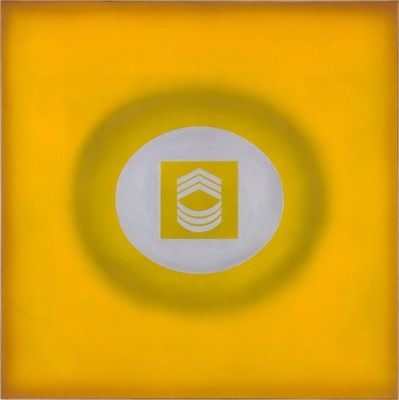
Billy Al Bengston, Sonny, 1961. Oil on Masonite, 36 x 36 in., Billy Al Bengston Studio Holdings
Wrong, wrong, wrong. Crosscurrents presented familiar names beautifully—one or two emblematic pieces from each artist, perfectly installed. Billy Al Bengston, Larry Bell, Judy Chicago… I was reminded why their work was exciting when it first appeared. As I rounded a corner, headed for the room with a beautiful Craig Kauffman, I saw a huge white painting that could only be called interactive. I moved, it moved. First it was a blank, then bars appeared. From one angle, the surface was smooth and uniform; a step to the left and brushwork, dextrous but with shaggy edges, appeared. As I came closer, the color shifted, reflecting a pinkish hue; as I stood back, it glowed cool. The unfamiliar name on the label was Mary Corse.
Where the fault lies
Where had she been these forty-plus years? Working and showing, as it turned out, just not making a splash big enough to reach San Francisco. She graduated with an MFA from Chouinard (now CalArts) in 1968. On the basis of the more extensive selection of her late 1960s work that was on view at the Museum of Contemporary Art, San Diego as part of Phenomenal: California Light, Space, Surface (another PST exhibition), classing Corse as a “Light and Space” artist is a fair call. But listen to what she has to say about that, in an exchange with journalist Chloe Wyman from the website Artinfo.com:
Interviewer: “You and artists Doug Wheeler, Craig Kauffman, and Larry Bell are often associated with the “Light and Space” movement, which developed in Southern California the 1960s and explored the environment, sensory perception, and time through industrial materials. Were you a tight-knit group? What did you learn from each other?”
Mary Corse: “At the time, I was not part of this group nor was I influenced by their work.”
That’s a rather loose “affiliation,” on the order of “we were alive in the same state at the same time.”
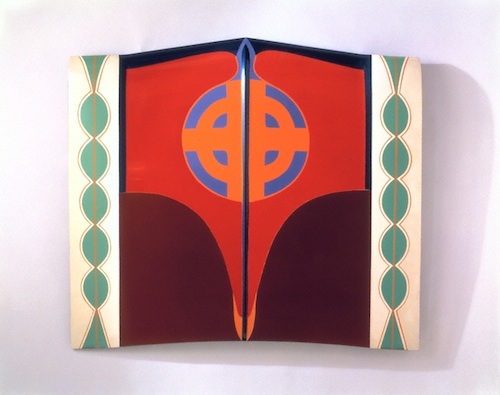
Judy Chicago, Car Hood, 1964. Sprayed acrylic lacquer on Corvair car hood, 42 15/16 x 49 3/16 x 4 5/16 in. Moderna Museet, Stockholm. Acquired 2007 with means from The Second Museum of our Wishes
In “Tremors in Paradise,” his essay for the 2000 exhibition catalog Made in California, curator Howard N. Fox offers an intriguing factoid that might explain Corse’s brusque answer: “Judy Gerowitz, who changed her name to Judy Chicago…was an acolyte of the Ferus “Studs” (as the core group of John Altoon, Robert Irwin, Craig Kauffman, Edward Kienholz, Allen Lynch, Ed Moses, and Bengston semiofficially called themselves.) She had enjoyed special status as the only woman allowed to hang out with the Studs at motorcycle races and at their favorite watering hole, Barney’s Beanery, where she often smoked cigars.”
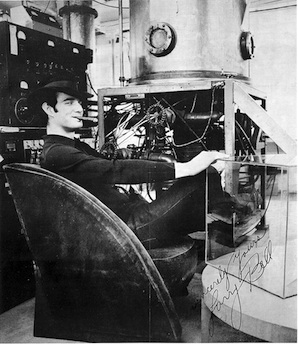
Larry Bell, studio shot showing vacuum coating apparatus, 1965
Admittedly, the overlap between the “Ferus Studs” and the “Light and Space” artists is not precise. But given Irwin and Kauffman’s centrality to both groups and Larry Bell’s propensity for posing with cigars, it doesn’t seem like a giant step to conclude that an artist with no interest in performing her masculinity might not fit in.
How the fault slips
But “movement” is a shifty term. Corse’s view of where her work belongs is important, but not definitive. The historical “groups” enshrined in art history texts and museum labels have been determined in many different ways, by the artists themselves, by curators and critics of their time, by art historians after the fact. The Surrealists, for example, might seem like a a clear case of a “genuine” artists’ movement—they had a manifesto and a gatekeeper in the person of André Breton—but there was also a shadow group of Surrealists, woman who couldn’t get in the gate. From our vantage point, their work is a substantial and valuable development of Surrealist ideas.
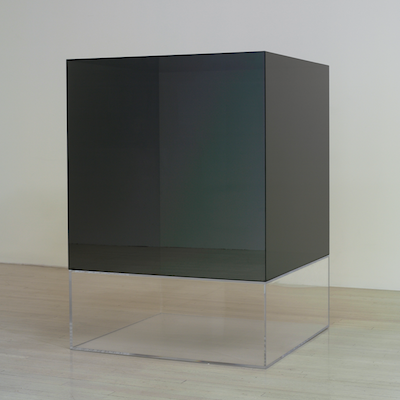
Larry Bell, Untitled, 1969. Mineral-coated glass, 40 x 40 x 40 in. Courtesy The Pace Gallery
To get a sense of how Corse’s work was perceived at the time the “Light and Space” movement arose, we can turn to the only contemporaneous survey of art on the West Coast, Peter Plagens’s Sunshine Muse, published in 1974, around the time that Robert Irwin and Larry Bell began to score major museum exhibitions. Plagens devoted two-plus pages to Bell’s work; Corse rated a quarter of a sentence. Her “white-on-white ground-glass paintings” were listed, along with the work of David Deutsch, Charles Arnoldi, and Connie Zehr, as “under the gun of ethereality.” With this curious phrase (what caliber is an ethereality gun?) Plagens acknowledged her historical presence while sliding right by her work.
The denouement
To be fair, in 1974 Corse’s use of glass beads might have seemed like a gimmick, an effect that was interesting once but could easily become predictable. The microspheres offer some artistic choices; they are available in different sizes and are more or less reflective depending on the thickness and color of the paint film in which they are embedded. But compared to the other materials explored and invented by Light and Space artists (De Wain Valentine patented a polyester resin), their formal possibilities might have seemed meager.
But a small number of variables, multiplied, quickly results in enough options to keep an artist busy for a lifetime. In Corse’s current solo exhibition, at Ace Gallery Los Angeles, she demonstrates the visual and spatial variations she can manage within her format. It’s not too strong to say the show is a mind-altering experience. After I played with it for a while, I was deeply aware of my mass in space, and the patterns of in the room were almost tangible. It seems strange to say so, but the calm responsiveness of the work to my presence gave me a feeling of being “seen.”
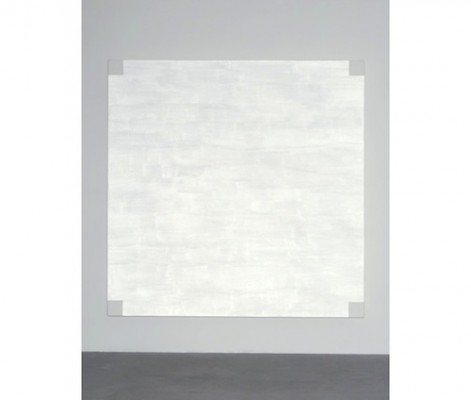
Mary Corse, Untitled (White Light, Four White Corners). Glass microspheres in acrylic on canvas 7' x 7' Courtesy Ace Gallery
Corse’s works occupy an unstable zone between painting (a mature technology for bending light into patterns we find meaningful), object sculpture, and kinetic, interactive media. And as Pacific Standard time sends the “light of the mind” back in time, searching for the history we need now, the works of Corse and other artists refract it back to us in accordance with our current position. This is a theme I will return to in future posts, coming to grips with other Pacific Standard Time artists and exhibitions.
Next time, it’s back to the San Francisco Bay Area for a look at the work of Sonya Rapoport, another artist whose work from the 1970s is suddenly coming into focus.
Mary Corse: Current Paintings is on view at Ace Gallery Los Angeles, 5514 Wilshire Boulevard, Los Angeles, California, February 25 – May, 2012
Pacific Standard Time: Crosscurrents in L.A. Painting and Sculpture, 1950–1970 is on view at the Martin-Gropius-Bau, Berlin, March 15 – June 10, 2012
